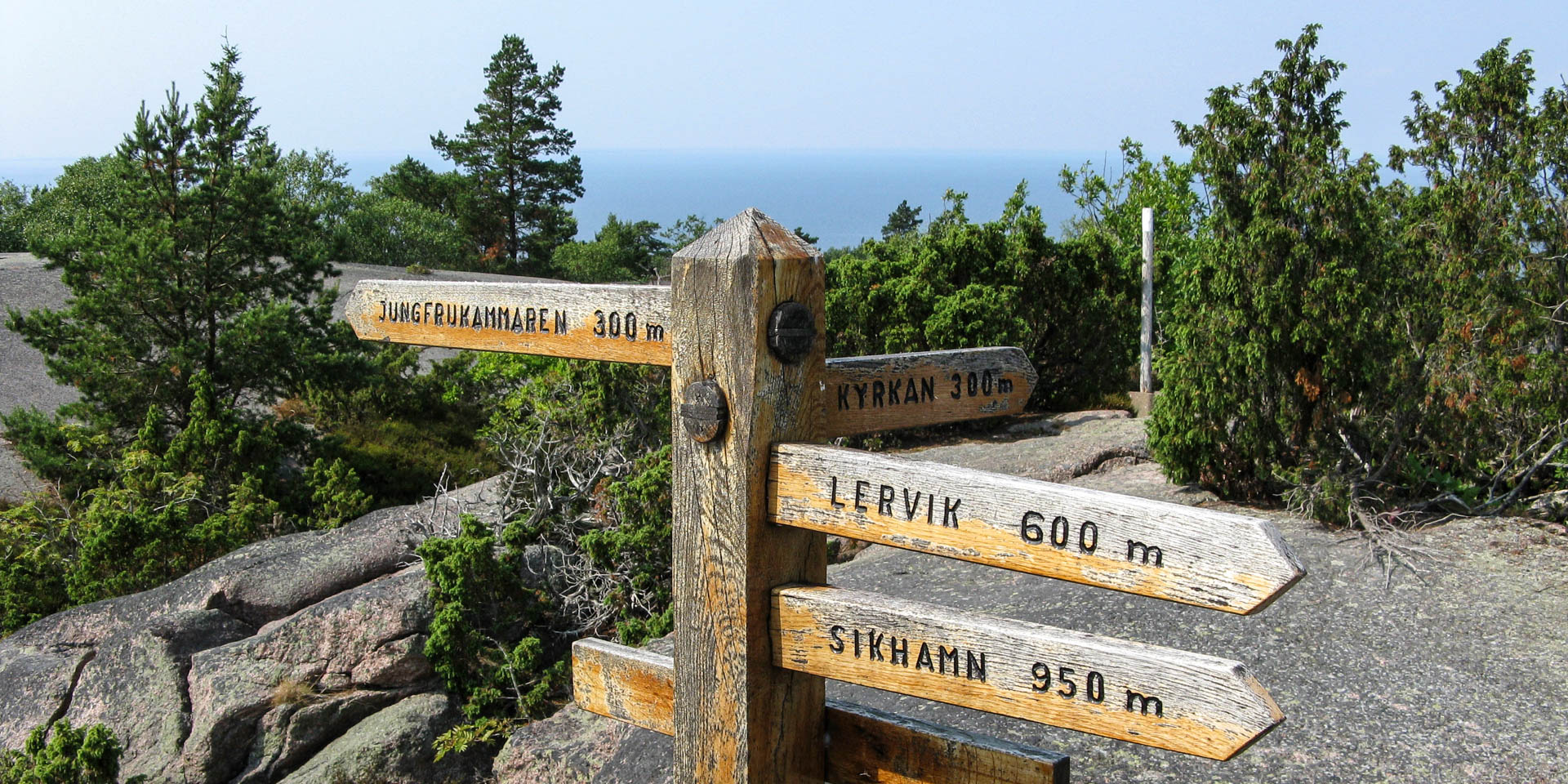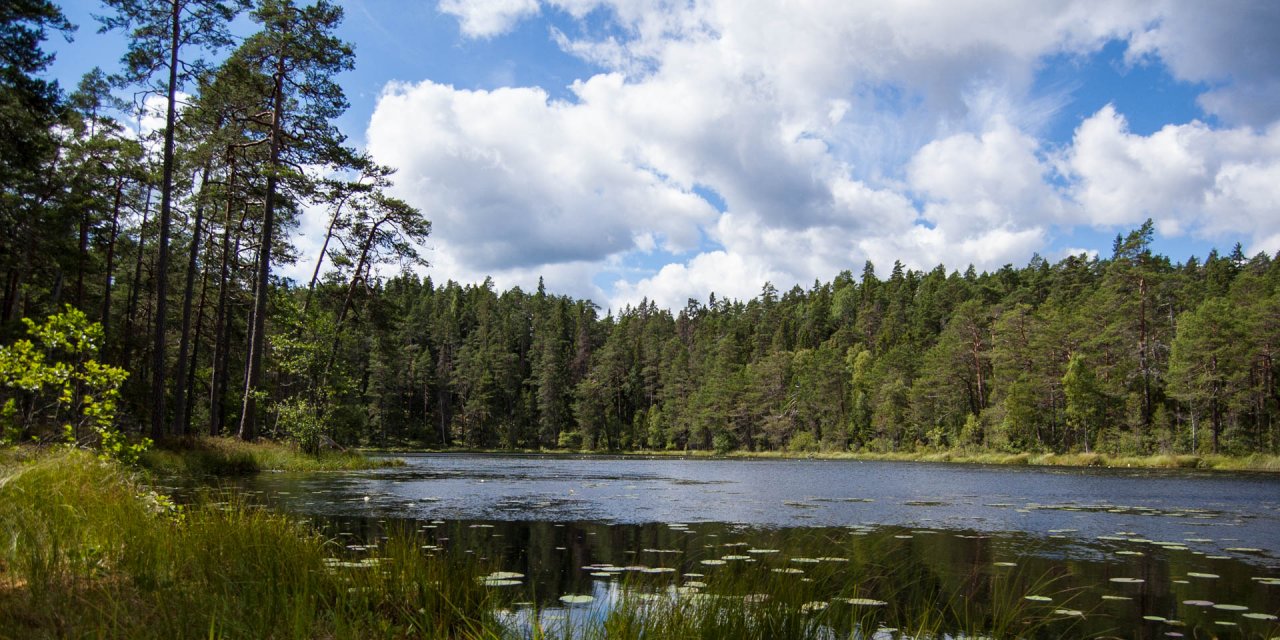

Blå Jungfrun Nationalpark
National park in Kalmar Sound
The uninhabited and legendary island Blå Jungfrun was declared a national park as early as 1926. It is located in Kalmar Sound between the Swedish mainland and the island of Öland, about 20 kilometers east of Oskarshamn.
The granite island Blå Jungfrun is 65 hectares in size and rises with its semicircular, blue-gray silhouette up to 86 meters above the sea level. In the Swedish mythology, the island is also known as Blåkulla – the place, which is used every Holy Thursday for the annual Witches' Sabbath.
Explore the national park
Through the national park leads a 3.3 kilometer circular trail along all the different regions of the island. Through sparse mixed forests with low, crippled trees and shrubs and on the southern slope of the summit through a deciduous forest with centuries-old gnarled oaks, ash, linden and maple, past shore areas with smooth-cut cliffs and up to the summit with a panoramic view over Kalmar Sound.
On the trail you will pass three moorings, two twin caves, Jungfrukammaren south of the summit and Kyrkan in the middle of the island, and the ancient stone labyrinth Trojeborg on the south side of the island.
Although the trail is partly equipped with walkways, stairs and handrails, there are also large height differences and the trail also often runs through rough terrain. Sturdy shoes and sufficient food and drinks should be considered, as there is no way to buy food or something to drink on the island.
The way to the island
Dogs may be brought to the island, but must be leashed at all times. Camping and making fire is prohibited, the only exception are the shelters at berth Sikhamn. There you can book a free sleeping place for an overnight stay in the period from mid-June to the penultimate week of August.
The national park is accessible year-round. If you do not have your own boat, there is a tour boat, which operates only in the summer months between mid-June and late August. From Tuesday to Sunday there is a daily round trip from Oskarshamn and from Byxelkrok on Öland. During this time, the national park is also occupied by at least two park rangers.
Flora and fauna on Blå Jungfrun
The maritime climate of the island with its relatively high humidity provides good conditions for special lichens. These include rare species such as green satin lichen (Lobaria virens), tree lungwort (Lobaria pulmonaria) or blue felt lichen (Degelia plumbea), all of which otherwise can only be found on the west coast of Sweden.
The ground vegetation in the forests during the summer consists mainly of extensive blueberry stands and in some locations of lesser butterfly-orchid (Platanthera bifolia) and heath spotted-orchid (Dactylorhiza maculata). In spring, the forest floors alternately glow in the bright blue of the common hepatica (Hepatica nobilis) and in the bright white of the wood anemone (Anemone nemorosa).
The isolated and by civilization influences largely unaffected island Blå Jungfrun has a rich occurrence of some rare insect species and is the breeding ground of rare bird species. The trunks of the gnarled deciduous and coniferous trees are home to many species of beetles, such as the capricorn beetle (Cerambyx scopolii), which is often found in the company of the marbled rose-chafer (Protaetia lugubris) and the rare noble chafer (Gnorimus nobilis) on the flowers near the shore.
Eurasian rock pipits (Anthus petrosus), common kestrels (Falco tinnunculus) and even white-tailed eagles (Haliaeetus albicilla) breed on the island. The only mammals on the island are bats – a previous hare population has collapsed after several consecutive harsh winters.



